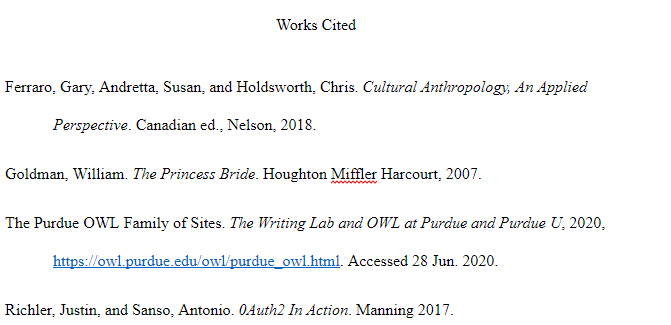Citation Basics

Photo by Patrick Fore on Unsplash So you understand the evils of plagiarism, and know that you must never, never plagiarize in your written work. So now what? If you’re like most people, you completed your high school English career without having to quote or cite very often, if at all.
The following information will give you the basics of citation so that you can tackle that paper with the looming due date.
For starters, there are many different citation styles. It is extremely important that you find out from your professor or instructor which style they want you to use for your assignment. If you aren’t told up front, ask. Following is a list of styles and the areas study in which they are usually applied:
- Chicago: Fine Arts, Literature, History
- APA (American Psychological Association): Social Sciences
- MLA (Modern Language Association): Humanities
- IEEE (Institute of Electrical and Electronics Engineers): Math and Computer Science
This list is not exhaustive. There are several style guides out there, and possibly your professor can recommend one to you. A thorough guide to several styles can be found here (you will want to bookmark this site)
Direct Quotations
There are two ways to cite another’s work in your own writing. One is to quote directly. How you cite will depend on the style you are using. For example:
APA

Chicago

Footnote:

If you are quoting over three words in a row, the rule of thumb is that you must place those words inside quotation marks.
Punctuation is critically important. Make sure your work mirrors all the punctuation, italics, etc. that you see in your style guide. The footnote below was created using the footnote function under the References tab in Word. Sometimes if you quote directly, you must include the page (paper source) or paragraph (online source) number in your citation. Be sure to check your style guide to see if this is required.
If you have a longer section of text to quote, you format it as a block quote. You do use quotation marks in a block quotation. Following is an example:
IEEE

In the IEEE style, the reference for quotation [1] will be placed not in a footnote, but in a References list at the end of your paper. For example:

Sometimes you have to change a quotation, so it fits with the grammar and syntax in your own work. Whenever you add or change parts of another’s work, you must put your change into square brackets:
APA

If you remove some text from your quotation, you must use ellipses to show your reader what you have done:
IEEE

Word TIP: To quickly justify the margins of your block quotation, select the entire quotation then click Ctl + J. Word will automatically line up your text on both the left and right sides of your block quotation.
Be aware that if you borrow diagrams, pictures/illustrations, charts or tables from a source you must cite these as well.
Indirect Quotations
The second type of quotation is an indirect, or paraphrased quotation. Here you are relating another writer’s idea or concept, but not using their exact words. For example:
APA

There are three major components of culture: values, attitudes, and beliefs (Ferraro, Andretta, and Holdsworth, 2018).
It is very important to show your reader (including your professor!) when you are writing about another’s ideas. Simply because you are not taking their description word for word does not give you permission to exclude citation.
 Photo by Iñaki del Olmo on Unsplash
Photo by Iñaki del Olmo on Unsplash
Bibliography
Depending on the citation style you are using, you will often have a list of the works that you cited at the end of your paper. In IEEE style, this is your list of numbered references, in numerical order. In MLA style, it is a “Works Cited” page while in APA style the same page is entitled “References”. Use the heading appropriate for your style. For example:
MLA

Note the double-spacing of the Works Cited list, above. The required spacing will be included as part of the instructions in your style guide.
Word TIP: Two sources in this list are long enough to take up two lines, and you can see that the second line is indented by ½”. Word has a very quick shortcut for this indent. Highlight your reference to be indented, click on the paragraph settings, and you will see an “Indentation” section. Open the pull-down menu under “Special” and select “Hanging” then click the “OK” button. Word has just saved you several minutes of messing with tabs, hitting the space bar, and undoing.
Conclusion
I have given you a very basic introduction to citation. It is by no means all that you need to successfully write a paper, but it will keep you out of trouble. A charge of plagiarism is a serious academic offence and can end your student career. Always remember – if in doubt, cite!